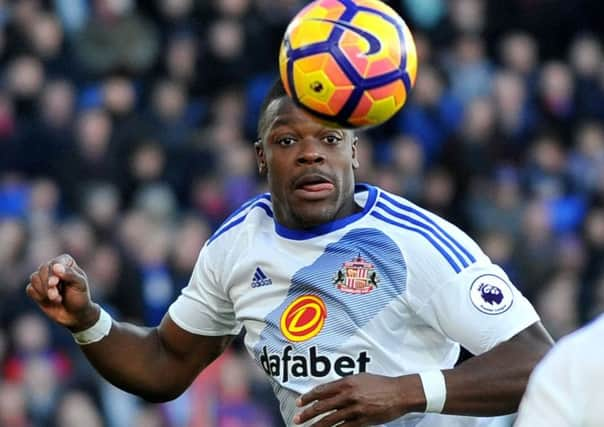Explained: Why Sunderland's defence has made such dramatic improvements in last two clean sheets


How quickly this game changes.
Problems remain but the emergence of some defensive steel has given genuine hope of another great escape. So what’s changed?
No weak link
Probably the most important element of the previous two clean sheets is that the back five has not had a weak link.
Advertisement
Hide AdAdvertisement
Hide AdIn a highly influential guide to football recruitment, ‘The Numbers Game’, Chris Anderson and David Sally advanced the theory that a team is only as strong as it’s weakest player.
Against Stoke City, Sunderland were simply dreadful all over the pitch.
At West Brom, however, they were undone because they were acutely vulnerable down the left-hand side of their defence.
The warning signs had been there at Turf Moor days previous, but the in-form and direct Matt Phillips laid Patrick van Aanholt & Papy Djilobodji’s erratic performances bare.
Advertisement
Hide AdAdvertisement
Hide AdIt was undermining any attempt to build a solid base from which to improve.
In the last two games Sunderland have delivered consistent performances right across the back five.
Javier Manquillo offered little in attack against Spurs but did impressively to shackle Kyle Walker in defence.
The introduction of Bryan Oviedo at Selhurst Park took that to another level.
Advertisement
Hide AdAdvertisement
Hide AdStats website whoscored.com collates match data on interceptions made, tackles won, aerial duels won etc.
In the last two games no Sunderland defender has scored less than 6.8/10. No weak links, no silly mistakes. Two clean sheets.
The resurgence of Lamine Kone and the return of Ndong
The Ivorian has disappointed this season, but his importance to the side was laid bare when they collapsed following his injury at Turf Moor.
Not selected by his coach at AFCON, he has returned with some valuable rest and his form in the last two games has been nothing short of inspirational.
Advertisement
Hide AdAdvertisement
Hide AdOne of David Moyes’ main concerns has been about Sunderland’s inability to get up the pitch, putting their defence under immense pressure.
That is largely what he sees as the reason for the bursts of goals conceded against the likes of Arsenal and Stoke.
They were under plenty of pressure against Crystal Palace in the first half, but Kone was utterly dominant against the threatening Christian Benteke.
Confidence clearly flooding back, he also showed a good turn of pace to surge up the field with the ball at feet on occasions, breaking the lines and lifting some pressure.
Advertisement
Hide AdAdvertisement
Hide AdPivotal, too, the return of Didier Ndong. Not just because of his wonder goal but the way his high pressing can win the ball in advanced areas, giving Sunderland valuable breathing space.
His energy also means Sunderland can defend quick counter-attacks far more effectively.
Moyes settles on his best defence?
The back three that has played the last two games has a good balance to it, each covering for the other’s weaknesses.
John O’Shea is not the quickest but both Kone and Denayer make up for that. Denayer has not fully developed an authority in the aerial duel but his partners are excellent in that department, while Kone may not be the best communicator but O’Shea is an excellent leader and organiser.
Advertisement
Hide AdAdvertisement
Hide AdCredit, too, to David Moyes, who has clearly managed to improve the team’s defensive shape and understanding during the extended break between the West Brom and Tottenham games.
Take into account Vito Mannone’s growing assuredness and the imminent return of Jordan Pickford, whose distribution will greatly improve Sunderland’s counters, and there genuine reasons for optimism.
At long last they are building from the back.